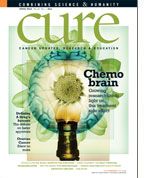Publication
Article
CURE
A Primer on How Faster Approval Works
Author(s):
The FDA's drug-approval process has several tracks that help medications quickly go from clinical research to clinical use.
Over the past two decades, the FDA has changed its drug-approval process several times, with each iteration aimed at speeding the time it takes for medications to go from clinical research to routine use.
For drugs being developed to treat serious and life-threatening diseases, such as metastatic cancers—those that seem to have a low risk of serious complications and some preliminary evidence of prolonging survival—the process can be even faster.
The agency allows these drugs on the market on a conditional basis, but usually demands the manufacturer conduct ongoing, controlled studies to determine whether the preliminary promise holds true. The manufacturer is required to compile these studies for several years after the drug gets preliminary approval. Once confirmatory data is compiled, the drug is eligible for traditional approval from the agency.
Manufacturers can ask that drugs be assigned to one of three approval tracks.
. . . . .
> The process: Moving drugs that fill unmet needs and treat serious conditions, such as cancer and Alzheimer’s, as fast as possible through the pipeline.
> Approval measures: Determining whether the drugs impact survival, improve day-to-day functioning and prevent the likelihood of the disease progressing if left untreated.Preliminary studies must indicate some advantage over available treatment, an alternative to drugs with more serious side effects, improvement to diagnosing a serious disease where early diagnosis affects outcome or decreasing the chances of toxicity of an accepted treatment.
. . . . .
> The process: Conditional approval for drugs going through clinical trials that show a significant outcome prior to trial completion.
> Approval measures: Efficacy must be verified in a phase 3 or 4 trial. Drugs don’t necessarily have to prove they significantly prolong lives. They can be measured on what researchers call a “surrogate endpoint,” which is a clinically meaningful outcome that can be a physical sign or laboratory measurement that is known to correlate with a more standard approvable endpoint. For example, whether patients’ tumors show significant shrinkage.
. . . . .
> The process: Drugs that offer significant improvement to existing therapies or offer treatment where no adequate therapy exists can have a priority review, where the FDA agrees to a hurried-up hearing process and reduces other regulatory hurdles.
> Approval measures: A drug must show the potential to significantly advance treatment, including substantially reducing a drug reaction or showing effectiveness in a new subpopulation of patients, such as children.






